Published
Pocket Monsters Blue Variant Guide
Print variations for Pokemon's third series entry
By George W.
Greetings friends! This post is a researched guide on the various components & print combinations of Pocket Monsters Ao (Blue version). As time goes on, I will update it as new information is presented & discussed in the collecting community. In our previous posts, we looked at Pocket Monsters Red and Green, including a dedicated post to the very first editions.
NOTE: To see the list of print variants as they exist on A Few Games' database, view them here. A full list of sources can be found at the end of this post.

Overview
Pocket Monsters Blue is a curious case in the history of the franchise. To start, it had multiple printings of seemingly the same contents and box, and was only available through mail order. Later, it would finally get its own retail release, but only after Yellow version launched.
It's also worth noting that Pocket Monsters Blue's software version would go on to be the basis for international releases, Pokemon Red and Pokemon Blue.
Here's a high level timeline of public availability for the game:
- CoroCoro Comic Mail Order Campaign (December 1996): To celebrate 1 million sales of Red and Green versions, customers could order the limited release Blue version.
- TOYOTA Campaign (1997): Distributed for customers who signed on to a Toyota contract.
- Lawson mail order campaign (July 1997): Customers can once again apply & receive Blue via online application.
- General retail release (Oct. 10th, 1999): Finally, customers can buy Blue version in stores.
1996 CoroCoro Comic Mail-Order Campaign
Blue version was announced on October 15th, 1996, then featured in CoroCoro Comic where readers were informed they could purchase & receive the game by mail. To date, Blue version is the only made-to-order entry ever made. It's unclear exactly how many copies were produced.
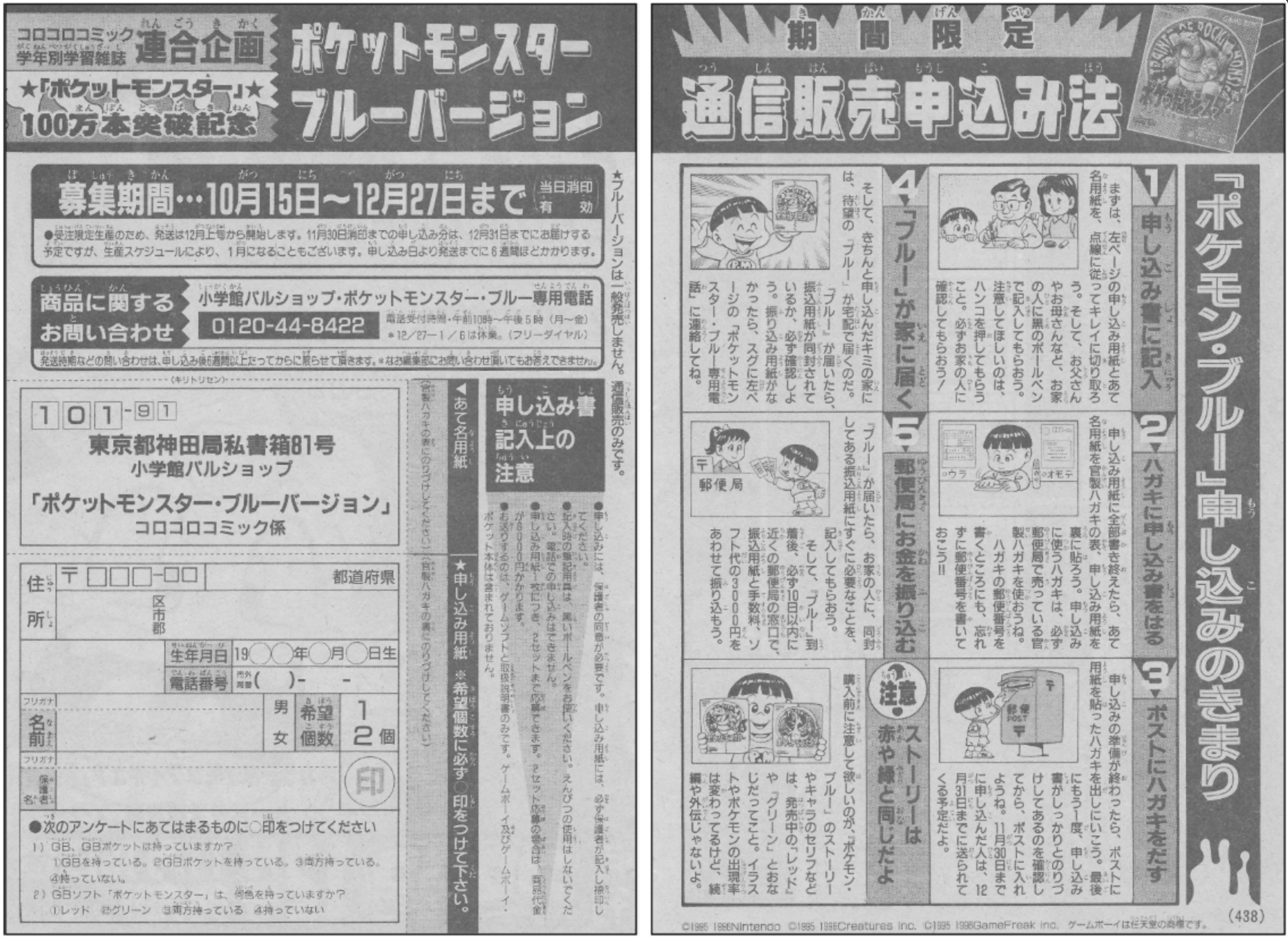
CoroCoro readers could expect to receive their copy of Pocket Monsters Blue in mid-December of that year, at the earliest, and orders after November would likely arrive by January or February in the new year.
This initial version included a plastic bag. The application period was October 15th through December 27th, 1996, to celebrate one million sales for Red and Green.
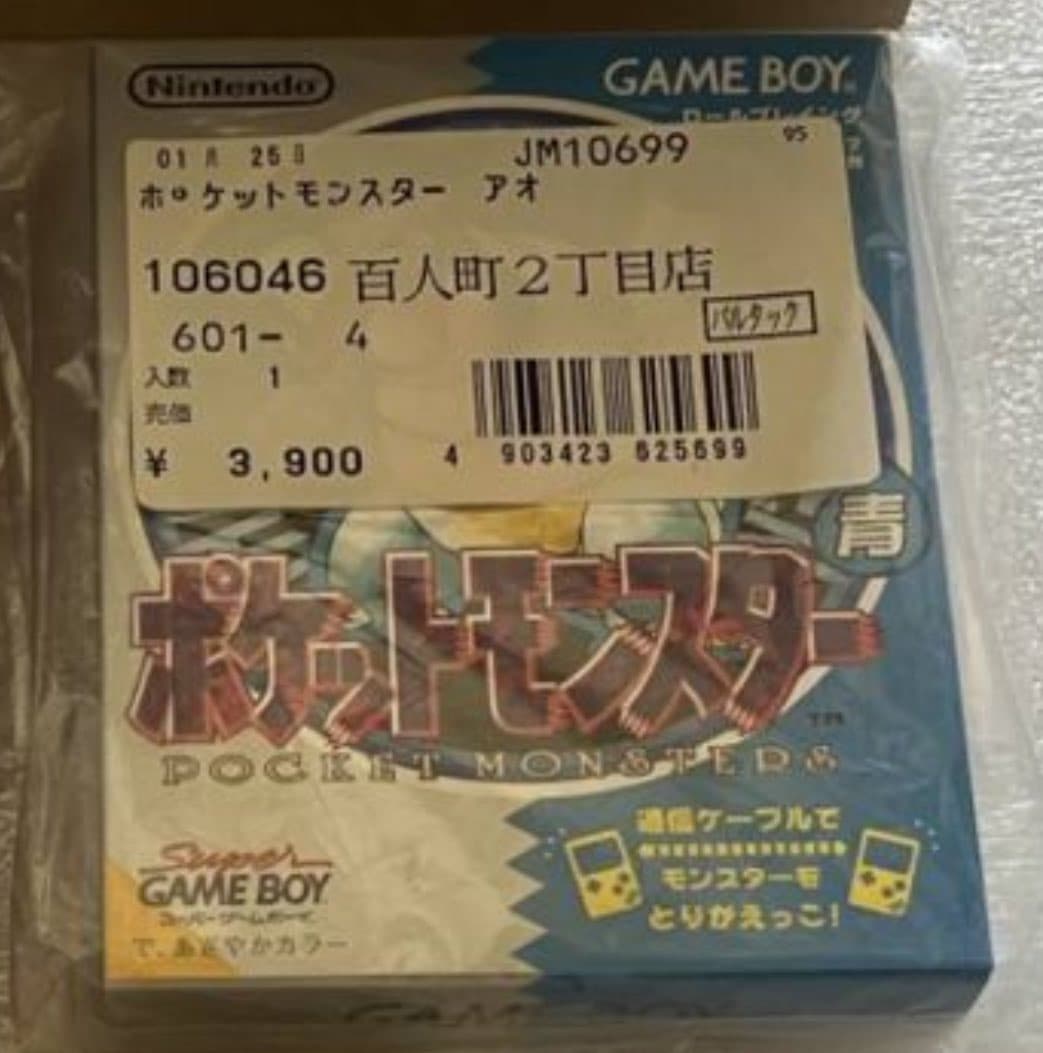
TOYOTA Campaign
Blue had an exclusive TOYOTA AUTO promotion that features a sticker. The box doesn't appear to have any different characteristics compared to the mail order variant.

According to collector @RB1989421GB on X/Twitter (roughly translated):
The Toyota version was distributed as a commemorative gift to those who signed a contract during the Toyota campaign period in 1997, as a set of Toyota limited model Game Boy Pocket Skeleton & Pokemon Blue Version. There is a Toyota Auto sticker on the box.
1997 Lawson Mail Order Campaign
Between June and August in 1997, a second mail order campaign took place for customers who missed the late-1996 campaign in Corocoro Comic. This time the applications were available in CoroCoro Comic, Ciao, and Lawson magazines.
An Internet Archive page from Game Freak's website, roughly translated, says:
There's another chance to get your hands on "Pokemon Blue Version." This time, to commemorate the sales of over 4 million copies, the blue version is being sold online as a special project jointly carried out by Nintendo, Shogakukan, and convenience store Lawson.
The mail order period is from June 13th to August 31st. For details on mail order applications, please check Shogakukan's grade magazines, magazines such as CoroCoro Comic, Ciao, or Lawson.
1999 Retail Release
According to @RB1989421GB on X/Twitter, the retail version released on October 10th, 1999 (almost three years after the mail order version).
While the mail order variant had no barcode on the actual box (see above photos), the retail release included it.
Okay, let's dive deep into the physical print differences you can expect to see from such a long print history!
Box
Here's a side by side showing early box design vs. later (retail) design:

The boxes with UPCs also had JPN-1 codes on the flaps. Funnily, they removed those G codes.
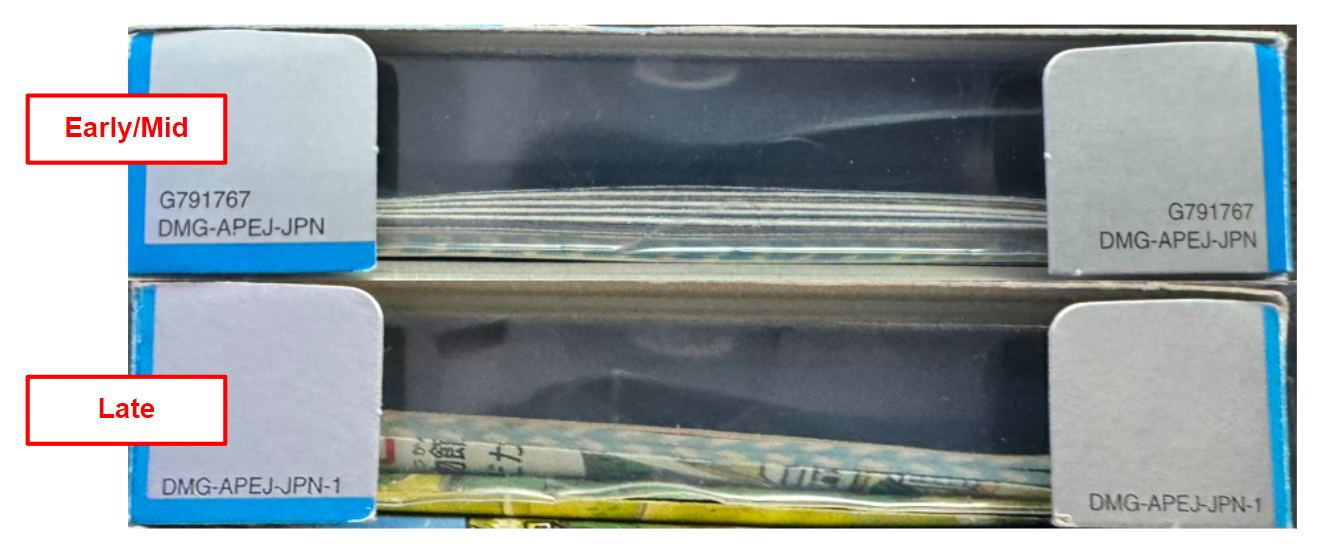
Contents
Now for what's inside the box. This is where it can get complicated, same as any other video game.
Cartridge
Matching components means putting together a few pieces: stamp codes, PCB date codes, and chip codes:

There are currently known launch copies using 20 production codes. There were likely parallel codes used at launch, but that's still unclear.
When looking at the circuit board for an early print cartridge, the date code (9646) should be well before the December release date, for example this one in November, 1996:

Manual
Like in Red and Green, we have some work to do in identifying the specific date ranges used in a given copy of the game. Thankfully, Nintendo includes production codes!
For the manual, there's one key difference: early prints have JPN code, late prints have JPN-1. The latter is likely for any copy starting with the 1999 retail print.

We can differentiate further by looking at the last page of the manual, which highlights changes based on the date code. Early prints had no date code, middle prints (likely after the first mail-order run) began adding some (e.g., 971106, or 11/06/1997), and late prints would begin updating the page design plus updating date codes for a given print run (in this case, a 1999 date code).
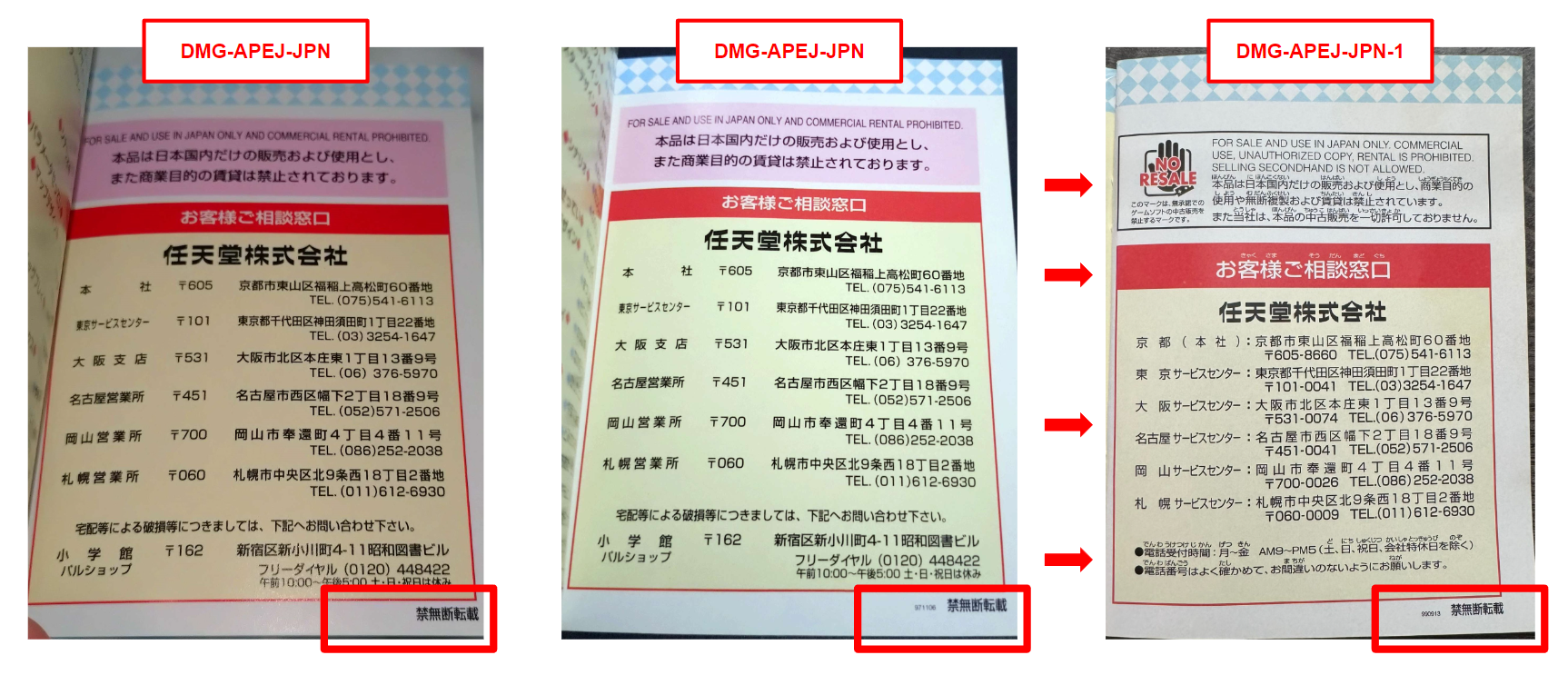
Inserts
Cartridge and manual are by far the most important pieces, but the inserts are useful to know about if you're a completionist (like me).
Map
- Included for all prints
- Code: DMG-APAJ-JPN / G505910
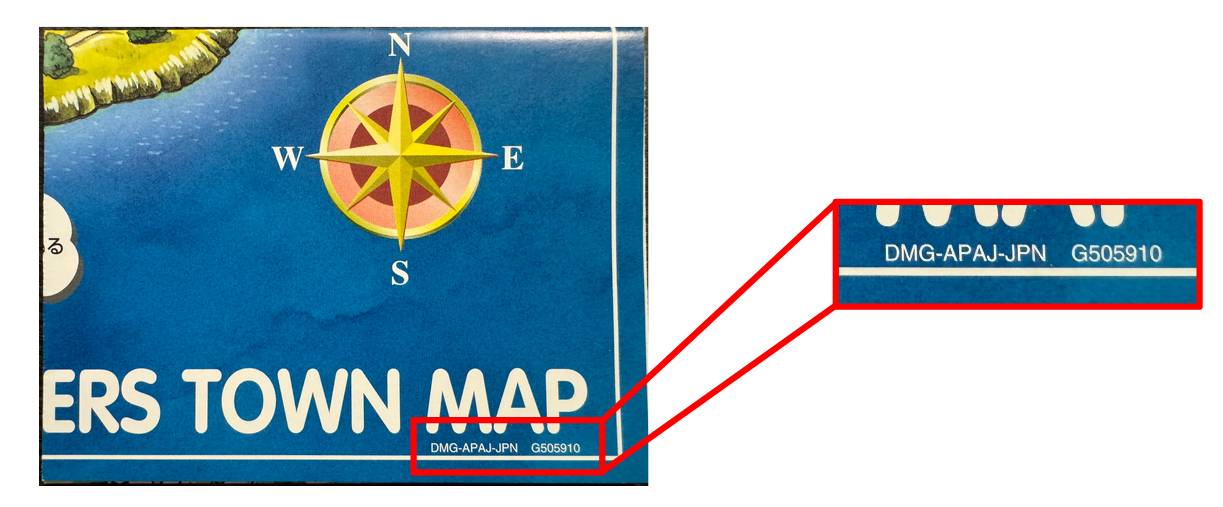
Anti-Tampering Notice
- Included for all prints
- Code: G508989
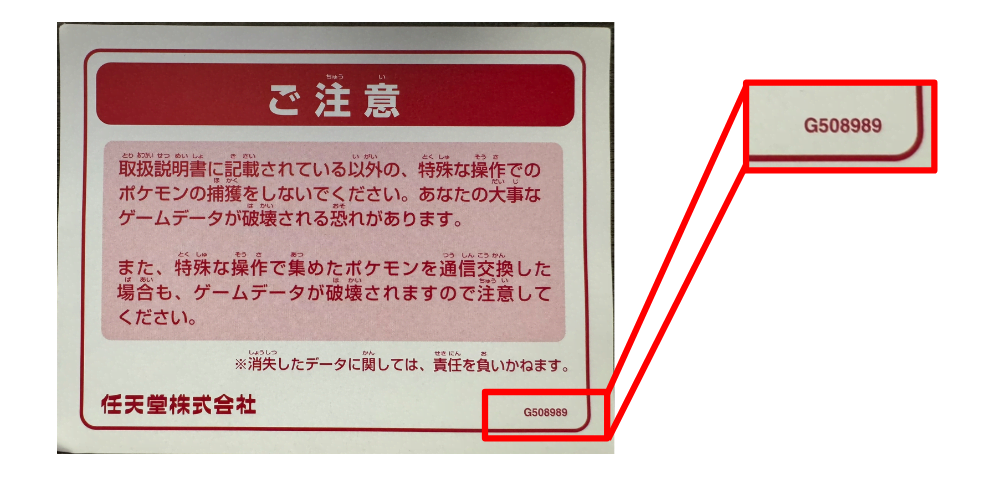
Game Boy Pocket Ad (1 code) (unconfirmed)
- May have been included in the first mail-order copies
- Code: T-DMG-MGB001-JPN-1
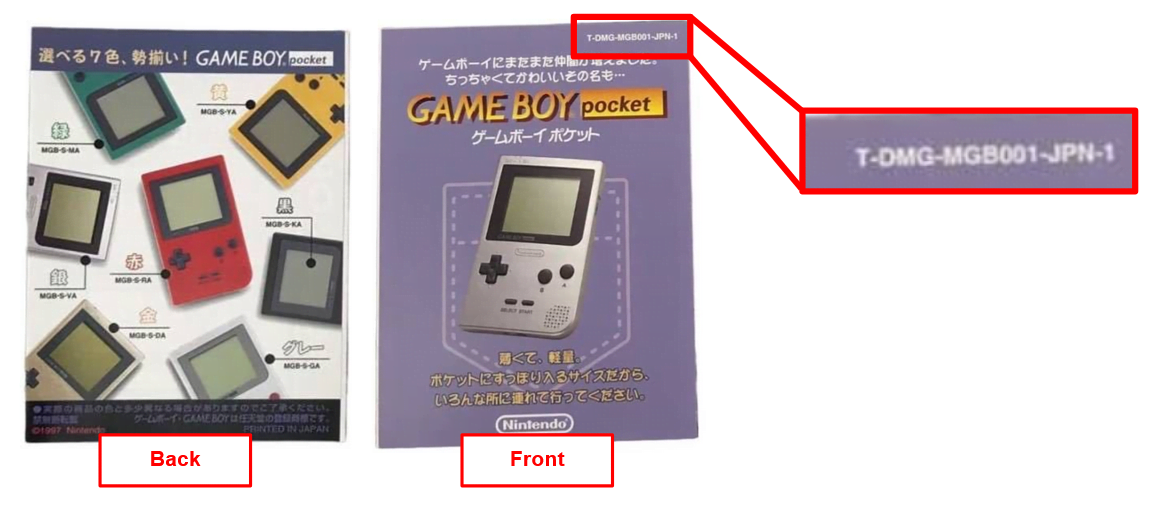
Game Boy Pocket Ad (3 code) (unconfirmed)
- May have been included for TOYOTA AUTO promo or 2nd wave mail order copies (1997)
- Code: T-DMG-MGB001-JPN-3
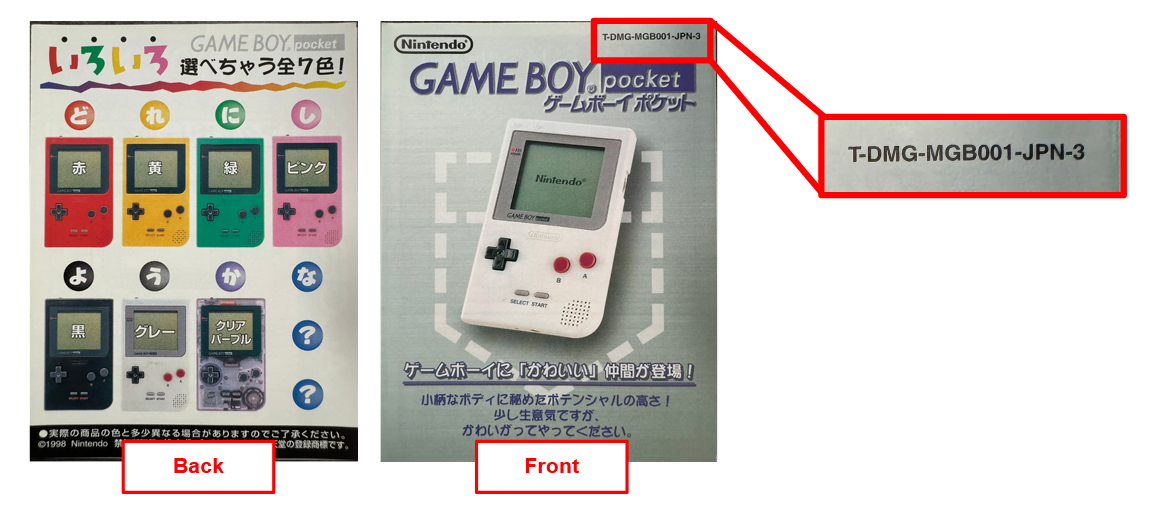
Game Boy Camera Ad
- Included for retail copies (1999+)
- Code: T-DMG-MGB006-JPN

Game Boy Color Ad
- Included for retail copies (1999+)
- Code: T-DMG-CGB001-JPN-2
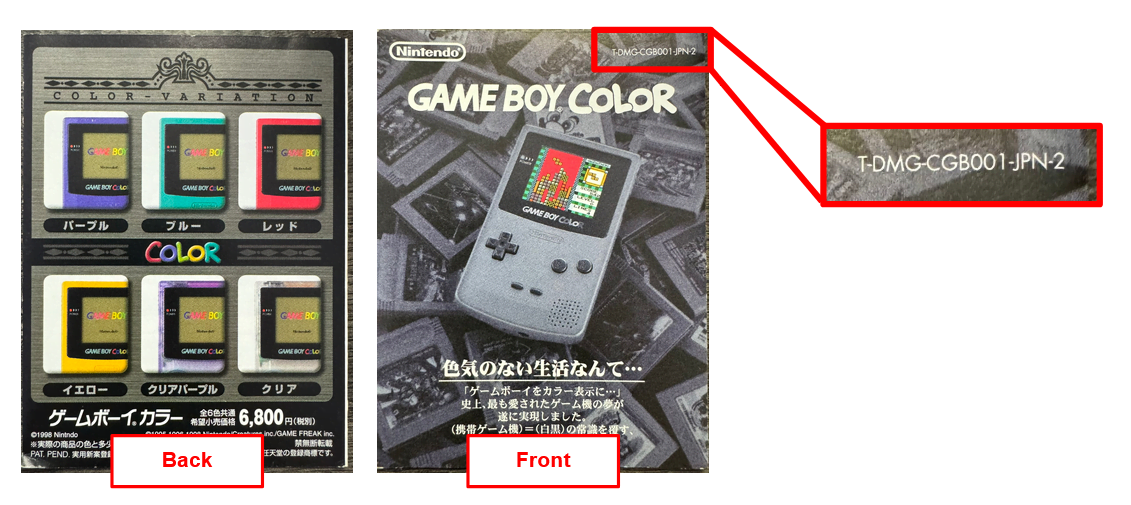
Cartridge Cleaning Guide
- May have been included during the release range of Gold & Silver (late 1999+)
- Code: DMG-JPN
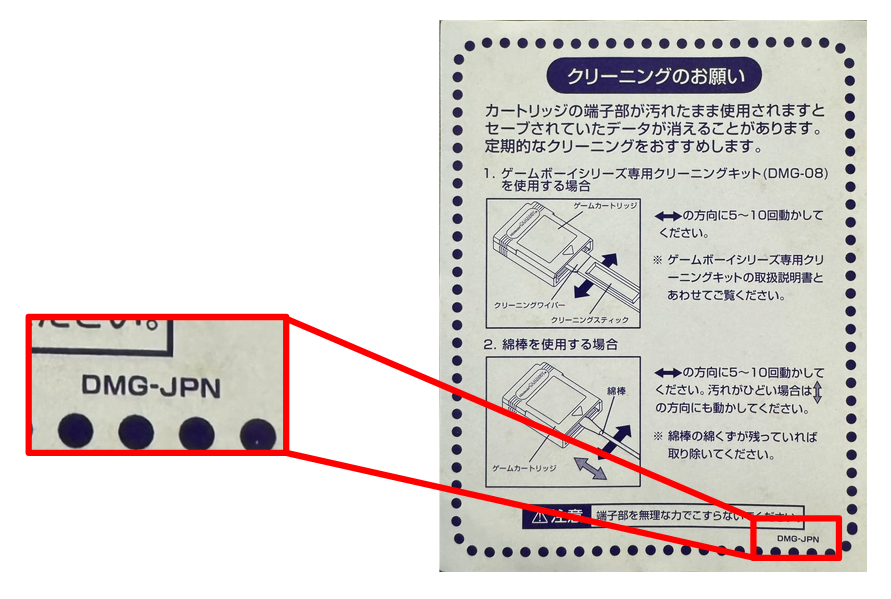
Conclusion
Let's wrap this up with a quick breakdown on parts correlation, to get a sense of which "bundles" make the most sense.
Possible combinations:
- No UPC (box)
- **Cartridge: **20 stamp code + 964X PCB chip code
- Manual: JPN code
- **Inserts: **Anti-tampering notice, Game Boy Pocket ad (1 code), map
- No UPC / TOYOTA AUTO promo (box)
- Cartridge: 20/12/00/22 stamp code + 96XX-97XX PCB chip code
- **Manual: **JPN code
- Inserts: Anti-tampering notice, Game Boy Pocket ad (3 code), map
- With UPC (box)
- C**artridge: **XX or XXA (revised) stamp codes + 99XX+ PCB chip code
- Manual: JPN-1 code
- **Inserts: **Anti-tampering notice, Game Boy Camera ad, Game Boy Color ad, map
Keep in mind this is approximate as the information may change over time with new insights and documentation revelations!
What did you think of this scroll down history lane? Like all the other guides I post, I try to fill as many blanks as I can, but unfortunately sometimes certain details are lost to time. With unopened copies of these games now selling for four- and five-figures, it can be challenging to definitively get to the bottom of this info short of a full set of manufacturing order sheets.
If you know anything that might add to the thoroughness of this guide, feel free to reach out!
Sources
- The Mikaifu Collection - General timeline information
- Thaane (via SACK Discord server) – Photos & production code data
